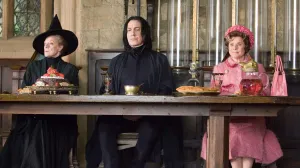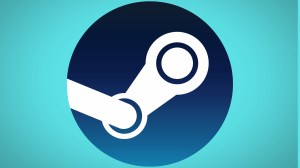Ghost of Yotei is due out very soon, but I’m worried about it in spite of PlayStation’s pedigree. It’s shaping up to be one of PlayStation’s biggest launches of 2025 and a sequel to one of the most popular games in Sony’s lineup. Sony and Sucker Punch have shown the expansive world, the new weapons, and so much more to be excited about. Not only this, but it aims to take full advantage of the PlayStation 5 and PlayStation 5 Pro’s hardware. My worry stems from one reason: the fact that Ghost of Yotei is a sequel, an area where Sony has had some issues in the past.
Videos by ComicBook.com
We’ve seen new IPs delivered from PlayStation and its studios time and time again, but the follow-up to these titles has not reached the same acclaim for one reason or another. God of War, Marvel’s Spider-Man, and The Last of Us are not only some of my favorite games, but some of the most acclaimed. But each of these suffered from an issue that Ghost of Yotei could repeat and prevent it from achieving the same heights Ghost of Tsushima reached.
How PlayStation’s Track Record Fuels Concern

Sony has no shortage of successful sequels. While almost each of them may be a commercial and critical success, a pattern starts to emerge upon closer inspection. God of War: Ragnarok was a technical marvel; it’s packed with breathtaking visuals, cinematic storytelling, and weighty combat. Yet for all this brilliance, it was hindered by its pacing, dragging in places while moving past others far too quickly.
Locations like Ironwood and The Crater overstayed their welcome, while the actual Ragnarok event, the game is named after, felt like it was over in 15 minutes. Vanaheim and Jotunheim faced similar issues to the point where I just wanted to get these areas over with. Compare this to God of War, a game where I was glued to my screen the entire time. This isn’t to say Ragnarok is a bad game, far from it. But it wasn’t what I expected from a sequel to one of this generation’s best games.
The Last of Us Part II faced an even harsher reception. While it made some bold narrative choices, Joel’s fate traumatized a whole army of gamers. This was further exacerbated by what I consider the worst part of the game: its focus on violence and revenge instead of what made the first game so acclaimed. It’s one of the laziest methods of storytelling, especially considering Ellie goes through the entire game only to change her mind at the last moment. While the gameplay is some of PlayStation’s finest, the narrative made the experience feel hollow as a whole.
Not even Marvel’s Spider-Man 2 can escape Sony’s sequel problem. It is one of the smoothest and most polished superhero games ever made, until you compare it to the first game. Insomniac expanded with new flashy abilities and delivered a heartfelt story in a bigger world, which I loved. But overwhelming repetition, weaker villains, and a structure that doesn’t live up to the first game made reaching the end a chore. And like God of War: Ragnarok, it was a sequel that just didn’t grip me like the first game.
And this is why I’m concerned for Ghost of Yotei, the sequel to one of my favorite games. The revenge plot is one of my biggest worries, especially seeing how The Last of Us Part II and Assassin’s Creed: Shadows implemented it. Furthermore, Ghost of Tsushima had excellent pacing with a clear path, something I fear Yotei may drop in favor of a larger world and unnecessary gimmicks.
Why Bigger Doesn’t Always Mean Better in Sequels

There is always the natural temptation to go bigger with sequels. More enemies, larger maps, flashier combat, longer campaigns, more collectibles — I could go on and on. But bigger isn’t always better, and sometimes, less is more. Narrative-driven games should especially keep this in mind. All too often, developers get trapped in the idea that adding more makes a game better, when instead it just causes unnecessary bloat.
Sucker Punch has already confirmed that Ghost of Yotei is about the same size as Ghost of Tsushima and that the budget is also about the same, according to an interview with Game File. While many may be relieved to hear this, I can’t help but have a sneaking suspicion this isn’t the good news it appears to be. Both games have similar environments, and while combat and enemy variety have been expanded, Sucker Punch will likely still be reusing a lot of assets. So where did this budget go, and how do we know it won’t cause bloat?
I’m already concerned about the narrative and its focus on revenge. With six targets for Atsu, will Sucker Punch be able to control the scope from spiraling out of control? Will it feel repetitive as players go from one of the Yotei Six to another? Will there be satisfying side activities, or will Ghost of Yotei be a blood bath? Ghost of Tsushima balanced action, exploration, and reflection quite well, and I can’t help but wonder if its sequel can properly nail this.
I want to be clear: I don’t think Ghost of Yotei is doomed, and I genuinely want to see it succeed. Sucker Punch has already proved it can deliver a satisfying title. The studio has also shared how Yotei improves on Tsushima, such as focusing on exploration and making it different and just as satisfying as the first game. As this is one of my favorite parts of Tsushima, I am hopeful that Yotei will not only be a success but also break Sony’s curse of sequels that fail to live up to the series’ legacy. But I can’t shake the fear that this will just be another example of Sony’s sequel shortcomings.
What do you think? Leave a comment below and join the conversation now in the ComicBook Forum!









